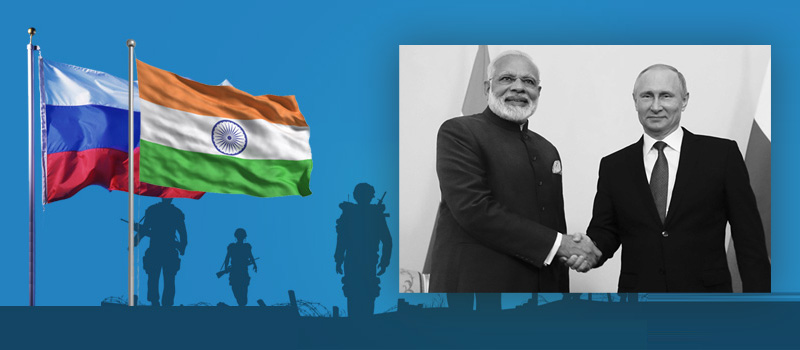
By MK Bhadrakumar
(Opinion) The finance ministers of the G7 countries – the US, Canada, the UK, France, Germany, Italy and Japan – approved a US proposal to set a price cap on Russian oil in an innovative weaponization of sanctions against Russia on Friday.
But its targets also include China and India, Russia’s main clients. Big Oil hopes to stage a return to the Indian market to replace Russian oil.
Also Read: Check out our coverage on curated alternative narratives
India’s strategic autonomy is being challenged to decide at what price and from where India can most advantageously obtain its energy supply, which is vital to the overall performance of its economy.

Washington has happy memories of past regimes in Delhi balking at demanding the return of India’s oil imports from Iran and Venezuela and replacing them with overpriced US imports.
History is repeating itself – except that India’s ties with Russia are very strategic.
US hopes to kill three birds with one stone – cripple India’s growing oil trade with Russia; damage India’s relations with Russia; and, steer the Modi government to the western camp in the new Cold War conditions.
When war broke out in Ukraine, the old Bush doctrine roared back: ‘You’re with us or with the terrorists.’
However, Indian diplomacy remained eel-like – slippery and at home in both fresh water and sea.
Of the White House’s reaction to the Indian Army’s participation in the ongoing Vostok 2022 strategic command and staff exercises in Vladivostok, it has ‘concerns… but of course, each participating country will make its own decisions’ – shows Washington’s anger.
The United States is angry that India increased imports of Russian oil at a discounted price.
Deputy Treasury Secretary Wally Adeyemo recently visited Delhi to convey the stark message that Washington expects India to join the G7 move to impose a price cap on Russian oil.
Adeyemo’s proposal: ‘If India joins the coalition, it can have a role in setting the price cap’!
He argued that the US price cap would give the Indians much more leverage, driving down the price of Russian oil even further!
Now, that’s a load of sophistication.
President Putin will surely regard the G7 price cap as a humiliating US diktat.
Russian Deputy Prime Minister Alexander Novak said on Thursday: “We simply will not supply our oil and oil products to such companies or countries that will impose restrictions, because we will not work under non-market conditions.”
The Russian embassy in Washington warned that the US “is using tricks and sometimes blackmail to coerce…third countries”.
High energy costs have proven that there are insufficient alternative supplies of oil and gas.
If Russia refuses to comply with the G7 regime and cuts production, this would cause further energy price increases in an already high inflation environment.
Or, Russia could cut off exports to those who agree to abide by the rules, and then oil prices would skyrocket.
The current figure of around US$100 per barrel could easily double its value, or even triple if the deficit reaches a threatening scale.
Indonesia’s Finance Minister Sri Mulyani Indrawati was on hand to underline that the problem today is fundamentally that demand exceeds supply, which has been disrupted and a price ceiling will not solve this.
She warned that energy demand will only increase further as the United States and European countries move into winter.
India should heed the warning.
The G7 control mechanism is likely based on the fact that Western financial and insurance companies control oil transportation services around the world.
However, a significant part of Russian flows are currently secured and financed by bypassing Western institutions, so the mechanism for monitoring the implementation of such an agreement will be limited.
But the danger lies elsewhere: while the price cap policy will not put Russia under the immediate fiscal stress expected by the G7, the market’s reaction will be unpredictable.
The point is that the G7 is playing a trick with the laws of supply and demand, but you can’t defy the laws of gravity when it comes to a tradable commodity.
The Russians are experienced players in oil politics.
They could increase the Russian oil ‘spread’ to other benchmarks (the current Urals Brent spread is around US$20-25 per barrel).
If prices rise more than the ‘spread’ increases, it offsets any reduction in income due to the G7 price cap.
The bottom line is that Russia does not need to sell in the prevailing conditions of a surplus of foreign currency in its coffers, and the US cannot afford Moscow’s extensive networks with OPEC partners.
India and Russia can jointly draft a roadmap. But the political will must be there to maintain India’s strategic autonomy.
The Biden administration is furious that Russian oil virtually killed India’s oil purchases from the US.
The heartburn must be there that the world’s number one market potentially for US energy exports remains elusive.
Big Oil killed the European market by replacing Russian gas at prices almost 10 times higher than the price for Gazprom’s long-term contracts with European customers!
Natural gas prices today in Europe are more than 10 times higher than the US level itself!
Hungarian Prime Minister Viktor Orban recently remarked sarcastically that US oil companies are ‘profiting’ from the war in Ukraine.
Exxon’s profits doubled, Chevron multiplied sevenfold and ConocoPhillips multiplied!
Big Oil’s influence on Wall Street is enormous. It finances America’s political elites.
The war in Ukraine is already fueling the American military-industrial complex.
If the Biden administration can shamelessly promote such neo-colonial policies in Europe, what could be the fate of India?
Ambassador MK Bhadrakumar was a career diplomat in the Indian Foreign Service. His assignments included the Soviet Union, South Korea, Sri Lanka, Germany, Afghanistan, Pakistan, Uzbekistan, Kuwait and Turkey.
This post was mirrored and first published here.
Join us on Telegram: t.me/theriotimes



